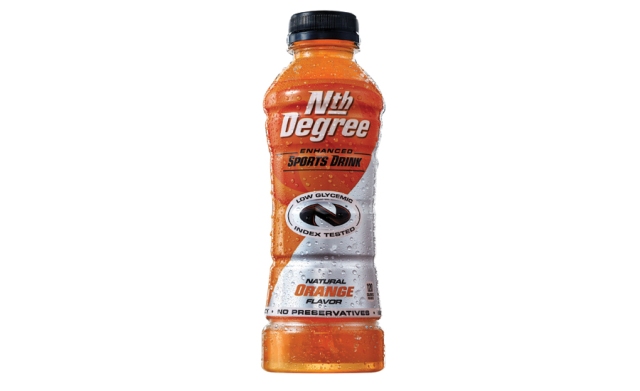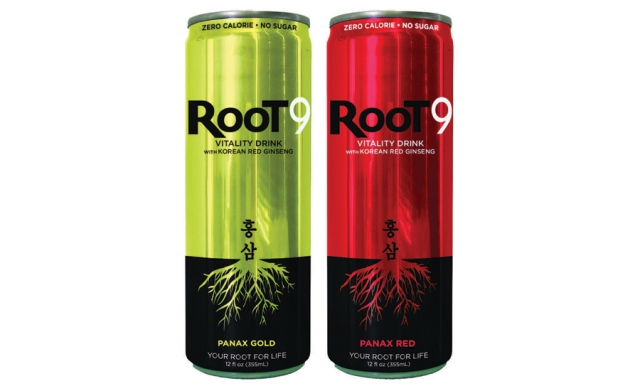Products List
Contact Us
News
Performance beverages show growth potential through 2019 |
| Author:sunstarmachine.com Date:11/9/2015 11:40:59 PM |
Performance beverages show growth potential through 2019Beverage-makers use ingredients that support endurance and recovery
Whether it’s the highly trained athlete or the casual runner, more consumers are turning to beverages to support their workout regimens. According to Chicago-based Mintel’s January report “Nutritional and Performance Drinks – US,” dollar sales of these drinks reached $11.5 billion in 2014. The market research firm anticipates the category will be a solid performer going forward as consumers continue to embrace health, convenience and function. Because of this, Mintel is forecasting sales gains of 26 percent — 13 percent when adjusted for inflation — for nutritional and performance drinks through 2019.
Although Mintel estimates that sports drinks account for more than half of the total U.S. retail sales — 59 percent — in 2014, the strongest growth in the category came from the performance drink segment, which was because of the growth of new products geared toward “less-extreme athletes.”
Healthy influence
With performance beverages resonating with more consumers, ingredient experts note that an increased focus on health and wellness has had a major influence on this market.
“Consumer awareness surrounding the positive long-term effects of a healthy lifestyle, which incorporates exercise, has had a noticeable impact on this market,” says Russ Hazen, premix innovation manager for Fortitech Premixes by DSM, Schenectady, N.Y. “Performance/sports nutrition products were initially sought after by body builders and hardcore athletes, but that has changed. Many of these products would have been purchased in a health food store, but increased consumer demand has moved them into mainstream supermarkets as well.”
Jon Peters, president of Beneo Inc., Morris Plains, N.J., also highlights the impact that everyday consumers are having on the market, citing Beneo consumer research from 2013 that found that 67 percent of U.S. consumers are concerned about having enough energy throughout their day.
“While athletes are particularly looking to performance beverages as a way to supplement their tough training regimens and are seeking sports drinks that give them the right kind of energy at the right time to enhance performance in their sport, consumers are seeking sources that will provide the delivery of sustained energy throughout the day,” he says. “They feel that existing energy drinks simply provide an initial alertness burst and then a subsequent crash effect. At the same time, we also see that all populations are looking for options to gain energy in a healthy and natural way.”
Fiber and protein support
To help support these health and wellness trends, beverage-makers are focusing on many different ingredients and formulation options. “Health and wellness trends are influencing the performance beverage market in a considerable way, especially when it comes to products that feature both protein and fiber,” says Kati Ledbetter, technical sales manager for ADM Wild Flavors and Specialty Ingredients, Decatur, Ill. “Our consumer trend info shows a lot of activity and interest in these products in particular. We know that protein and fiber are a powerful duo that works well together, and consumers are realizing it as well. The protein and fiber combination is a natural fit for products that are geared toward well-being in every sense of the word.”
Ledbetter notes that ADM’s Fibersol can support this because of the ingredient’s versatility. “Fibersol is much more than purely a source of fiber,” she says. “It offers many additional functional benefits as well and is provided in a variety of forms for the convenience of food formulators. The Fibersol ingredient range can help achieve total or partial replacement of sugar.”
Brent Petersen, associate director of research for Fitchburg, Wis.-based Glanbia Nutritionals, notes that protein health benefits lend themselves to performance beverages. “As consumers become increasingly aware of the health benefits of protein, they are proactively looking to integrate higher amounts of the ingredient into their daily diets,” he says. “With a particular focus on muscle maintenance, satiety and weight management, consumers look to protein in performance beverages due to its associated health benefits.”
Grace Harris, director of applications and new business for Hilmar Ingredients, Hilmar, Calif., explains that dairy proteins are one of the most studied proteins because of their role in performance and muscle development. Whey protein, for instance, provides essential amino acids and branched chain amino acids (BCAA), which are required for lean muscle synthesis, she adds.
“Everyone needs protein to sustain good muscle structure and overall health,” Harris says. “As we age, some of us will develop sarcopenia, a condition where the body starts breaking down existing muscle. Individuals who suffer from sarcopenia can lose body structure and strength. To support agility and movement, it is important to feed the body with critical nutrients.”
As protein becomes more popular for performance beverages, manufacturers are looking to step up their game, including developing products that increase the clarity of high-protein formulations. “Incorporating added protein into products can result in offnotes and negatively affect visual impact and texture,” Glanbia’s Petersen says. “Choosing pre-acidified whey proteins over traditional dry-blended whey proteins can enhance flavor and increase clarity, which provides an appealing clear, thin texture without cloudiness.”
The company’s BevWise A-100 Series of pre-acidified whey proteins are designed to overcome the challenges associated with acidic, high-protein beverages, he adds.
Cranbury, N.J.-based Innophos’ Barbara Bufe Heidolph, director of commercial and applications development, explains that overall consumers are asking for more protein — animal based and non-animal-based — in everything they consume.
To stabilize protein during processing and storage, the company’s Vitrafos line of sodium hexametaphosphate (SHMP) is designed to protect the protein to prevent precipitation and age gelation, she adds. “The ortho phosphates, especially DKP, are used to control pH and keep the protein functional and hydrated,” Heidolph says.
Carbs to the rescue
Beyond fibers and proteins, consumers also are looking for ingredients in their performance drinks to support endurance.
Michael Crabtree, technical sales manager for Minneapolis-based Bioenergy Life Science Inc., notes that the company’s five-carbon carbohydrate D-Ribose is designed to support endurance and improve performance because of its functionality and all-natural process of creating energy.
“As the body’s energy is depleted, due to any number of conditions created by daily life, the energetic materials responsible for maintaining physiological balance are depleted,” he says. “In general, this phenomenon is fatigue, which could lead to illness. The molecule responsible for transducing energy in the body is ATP. Ribose is the structural component (building block) of ATP5.”
Crabtree explains that muscle cramping and soreness because of exercise is mostly associated with a deficiency in ATP. “As the concentration of ATP declines in proportion to the work done by the muscle tissue, the homeostatic mechanisms (sodium, potassium, and calcium pumping integral proteins) begin to shut down,” he says. “This happens because they, themselves, are also ATP dependent.
“Metabolites begin to accumulate within the muscle causing the muscle to swell and add additional pressure at the neuromuscular junction causing pain, swelling and discomfort during movement post-exercise,” he continues. “A dose of ribose before and after in the pre- and post-workout nutritional supplementation alleviates this dramatically because it prevents the depletion of ATP.”
Ingredient suppliers understand the importance of providing carbohydrates that can offer consumers the energy fuel they need, but avoid the crash that sometimes can accompany high glycemic carbohydrates.
“Most popular sports drinks contain high-glycemic carbohydrates like maltodextrin, glucose syrup and sucrose,” Beneo’s Peters says. “They release glucose into the bloodstream at a fast rate, aiming to maximize carbohydrate utilization. Upon intake before sports, these drinks can result in large spikes and drops in blood glucose levels — not an ideal situation for athletes to start their exercise. In addition, the valuable contribution of fat utilization in the fuel mix is suppressed to a great extent during exercise.”
To deliver a balanced, sustained release of energy, the company offers Palatinose, an isomaltulose that has been shown to have a sustained effect on normal blood glucose levels, Peters explains. Nth Degree’s Low GI drink utilizes Palatinose in its formulation for a low-glycemic index sports drink, he adds.
Nutrient packed
Although carbohydrates will support endurance, more nutrients can be incorporated into formulations to support performance.
Fortitech’s Hazen notes that coenzyme Q10 (Co-Q10) has been known to play a key role in the human body when it comes to energy and endurance. “Coenzyme Q or ubiquinone compounds are synthesized in the cells of all living organisms including plants, animals and humans,” he explains. “There are 10 coenzyme Q compounds that occur throughout nature, but only coenzyme Q10 is synthesized in humans. Since coenzyme Q10 is a fat-soluble substance, absorption depends upon an individual’s fat digestion efficiency. Coenzyme Q10 is best absorbed if it is incorporated into a beverage with some fat content.”
Other ingredients that could be used when developing performance beverages are beta-alanine, an amino acid that forms the dipeptide carnosine in muscle; caffeine, a stimulant; guarana, which can improve alertness because of its caffeine content; L-carnitine, an amino acid that can be synthesized in the body; conjugated linoleic acid (CLA), a group of eight isomers that are structurally similar to linoleic acid (also known as omega-6); creatine, which can produce energy and build muscle tissue; and beet root, Hazen says.
“Recent studies have shown some potential for beet root containing products to increase the duration of exercise,” he explains. “These beet root products increase the nitric oxide levels in the body, which can also help increase blood flow.”
Innophos’ Heidolph also notes the importance potassium and magnesium can have on performance beverages.
“For many sports recovery beverages, potassium is added,” she says. “Innophos provides a complete range of potassium sources. The concentration of potassium varies from 29 percent for monopotassium phosphate (MKP) to 45 percent for dipotassium phosphate (DKP). Additionally, the full range of potassium sources provides other functionality, such as protein stabilization and buffering.
“Dimagnesium phosphate (DMP) is the preferred source of magnesium in liquid beverages,” she continues. “DMP is preferred because, in addition to providing magnesium, it has a stable pH and no heat of hydration. Other magnesium sources heat upon hydration, which can impact heat labile components like vitamins and proteins. DMP maintains a clean flavor in the beverage when used with soy protein. Magnesium is a ‘shortfall’ nutrient, one that is under consumed.”
Another ingredient that is underutilized in performance beverages is green tea.
“Many studies support the use of green tea in sports recovery,” says John Harper Crandall with Amelia Bay, Johns Creek, Ga. “This is an ingredient that has been widely used; however, the great opportunity for the right brand to do a line extension into all-natural sports recovery is ripe.” Milk Filling And Aluminium Foil Sealing Machine 2in1 http://www.sunstarmachine.com/html_products/Milk-Filling-And-Aluminium-Foil-Sealing-Machine-2in1-448.html Fruit Pulp And Granule Filling Machine Monoblock http://www.sunstarmachine.com/html_products/Fruit-Pulp-And-Granule-Filling-Machine-Monoblock-441.html |









